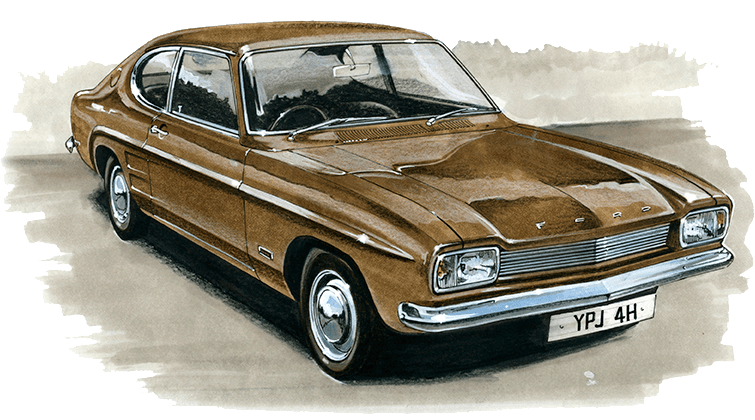
When it comes to classic cars, few evoke the same level of nostalgia and admiration as the Ford Capri. This iconic vehicle, with its sleek design and powerful performance, has gained a cult following and has become a symbol of the automotive industry. But when exactly was the Ford Capri first introduced, and how did it capture the hearts of enthusiasts?
The Ford Capri made its debut on the automotive scene in 1969, during a time when the demand for sporty coupes was at its peak. Ford recognized this growing trend and aimed to create a vehicle that combined style, performance, and affordability. The Capri was developed as the European equivalent of the Ford Mustang in the United States, targeting the same demographic – young, aspiring drivers seeking a thrilling driving experience.
The first-generation Ford Capri, known as the Mark I, was styled by Philip T. Clark and engineered by Ford of Britain. It was unveiled at the Brussels Motor Show in January 1969. The design aimed to capture the essence of the pony car era, with its long hood, short deck, and aggressive stance. To keep costs down, Ford utilized components from various models within their lineup, including the successful Ford Cortina and 1968 Ford Escort.
Initially available in two models – the Ford Capri GT and Ford Capri 2000 – this new coupe offered consumers a range of engines and trims to suit their preferences and budgets. The GT boasted a sportier appearance and featured a 2.0-liter V4 engine, while the 2000 model had a more refined look and was powered by a 2.0-liter straight-four engine.
The introduction of the Ford Capri was met with great enthusiasm and excitement. It quickly gained popularity among buyers who were looking for a dynamic driving experience with an affordable price tag. The Capri’s success can be attributed to its combination of attractive styling, comfortable seating for four occupants, and a well-balanced chassis suitable for everyday use.
Over the years, the Ford Capri received various updates and upgrades, as well as additional engine options. The Mark I was replaced by the Mark II in 1974 and subsequently by the Mark III in 1978. Each iteration brought its own improvements and refinements, solidifying the Capri’s position as an iconic sports coupe.
Although production of the Ford Capri ceased in 1986, the car has left an indelible mark on automotive history. Its enduring appeal has led to a dedicated following of enthusiasts who continue to cherish and restore these classic vehicles. The Capri has become a symbol of an era when the exhilarating freedom of the open road was best enjoyed in a stylish and dynamic coupe.
In conclusion, the Ford Capri was first introduced in 1969 and quickly became a sensation in the automotive world. Its timeless design, affordable price, and thrilling driving experience made it a beloved classic that continues to capture the hearts of car enthusiasts to this day. Whether cruising on the city streets or tearing up the racetrack, the Ford Capri remains an unforgettable icon in the world of sports coupes.